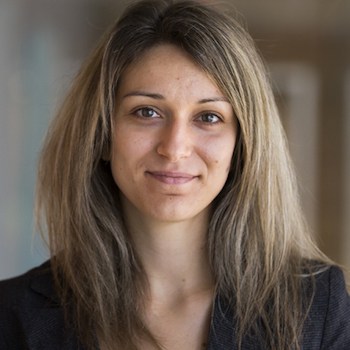Future-Focused Control Barrier Functions for Autonomous Vehicle Control.
Future-Focused Control Barrier Functions for Autonomous Vehicle Control.
ACC
@inproceedings{DBLP:conf/amcc/BlackJSP23,
author = {Mitchell Black and
Mrdjan Jankovic and
Abhishek Sharma and
Dimitra Panagou},
title = {Future-Focused Control Barrier Functions for Autonomous Vehicle Control},
booktitle = {American Control Conference, {ACC} 2023, San Diego, CA, USA, May 31
- June 2, 2023},
pages = {3324--3331},
publisher = {{IEEE}},
year = {2023},
url = {https://doi.org/10.23919/ACC55779.2023.10156163},
doi = {10.23919/ACC55779.2023.10156163},
timestamp = {Tue, 11 Jul 2023 16:44:32 +0200},
biburl = {https://dblp.org/rec/conf/amcc/BlackJSP23.bib},
bibsource = {dblp computer science bibliography, https://dblp.org}
}Abstract
In this paper, we introduce a class of future-focused control barrier functions (ff-CBF) aimed at improving traditionally myopic CBF based control design and study their efficacy in the context of an unsignaled four-way intersection crossing problem for collections of both communicating and non-communicating autonomous vehicles. Our novel ff-CBF encodes that vehicles take control actions that avoid collisions predicted under a zero-acceleration policy over an arbitrarily long future time interval. In this sense the ff-CBF defines a virtual barrier, a loosening of which we propose in the form of a relaxed future-focused CBF (rff-CBF) that allows a relaxation of the virtual ff-CBF barrier far from the physical barrier between vehicles. We study the performance of ff-CBF and rff-CBF based controllers on communicating vehicles via a series of simulated trials of the intersection scenario, and in particular highlight how the rff-CBF based controller empirically outperforms a benchmark controller from the literature by improving intersection throughput while preserving safety and feasibility. Finally, we demonstrate our proposed ff-CBF control law on an intersection scenario in the laboratory environment with a collection of 5 non-communicating AION ground rovers.
Authors
Bib
@inproceedings{DBLP:conf/amcc/BlackJSP23,
author = {Mitchell Black and
Mrdjan Jankovic and
Abhishek Sharma and
Dimitra Panagou},
title = {Future-Focused Control Barrier Functions for Autonomous Vehicle Control},
booktitle = {American Control Conference, {ACC} 2023, San Diego, CA, USA, May 31
- June 2, 2023},
pages = {3324--3331},
publisher = {{IEEE}},
year = {2023},
url = {https://doi.org/10.23919/ACC55779.2023.10156163},
doi = {10.23919/ACC55779.2023.10156163},
timestamp = {Tue, 11 Jul 2023 16:44:32 +0200},
biburl = {https://dblp.org/rec/conf/amcc/BlackJSP23.bib},
bibsource = {dblp computer science bibliography, https://dblp.org}
}

